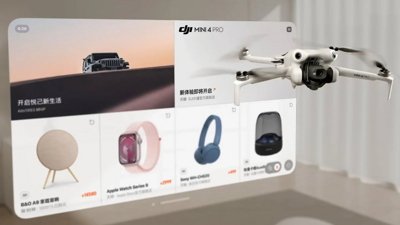Apple exploring 'particle gun' based wireless authentication
The application, entitled "System and Method for Authentication Based on Particle Gun Emissions," was filed with the U.S. Patent and Trademark Office this week. It states that current DRM methods for authentication, but by their nature they can lack security.
"Allowing initial information to be recovered from final information is a major flaw in cryptography systems since the objective of cryptographic systems is to protect the initial information," the application reads. "Many authentication systems exist. Accordingly, what is needed in the art is an improved way to perform authentication, such that it is impossible to extract initial information from final information."
Apple's solution would employ a particle gun, which would send an emission with unique physical properties to a receiver which would be able to verify the authenticity. The receiver would then generate a second value, and compare it with the first.
"Generating the first and second values is based at least in part on input data that provides physical emission properties of the particle gun including at least one of initial speed, electromagnetic fields, mass, electronic charge and time," it says. "The method of authenticating based on physical particle gun emissions makes it difficult to recover initial input from output values."
The application describes the particle gun as a device with a pair of conductive plates that generate two separate, independent and uniform electromagnetic fields.
The physical properties of the particles generated would be calculated based on time, mass, initial velocity, electromagnetic field intensity, and the orientation of the particles when they leave the gun. These properties would allow both the sender and receiver to create an identical "secret" code that would be extremely difficult to crack, ensuring security.
Made public this week, the application was first filed by Apple on Dec. 1, 2008. The invention is credited to Augustin J. Farrugia, Mathieu Ciet, and Pierre Betouin.
 Neil Hughes
Neil Hughes











 Amber Neely
Amber Neely
 William Gallagher
William Gallagher

 Malcolm Owen
Malcolm Owen











